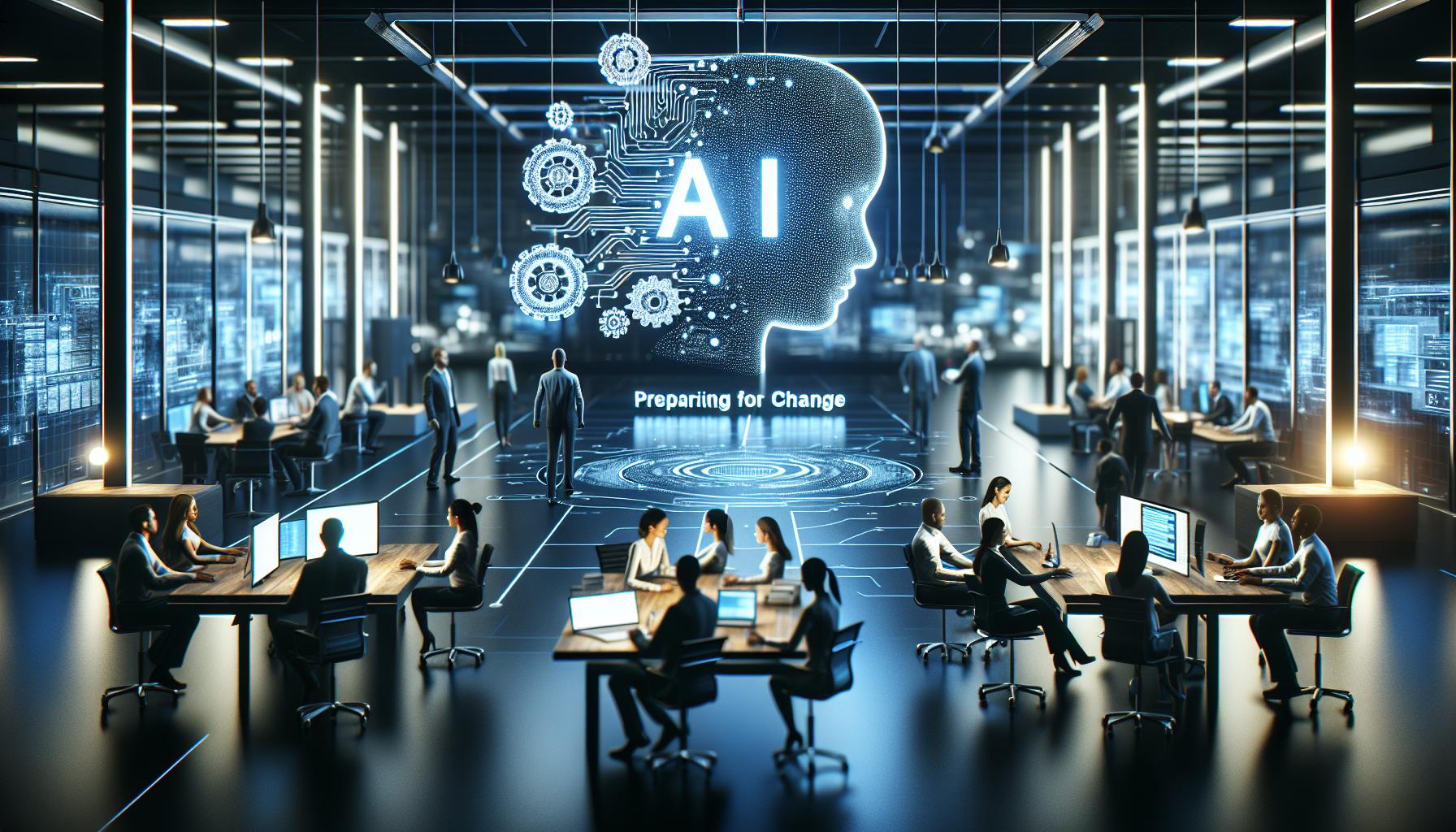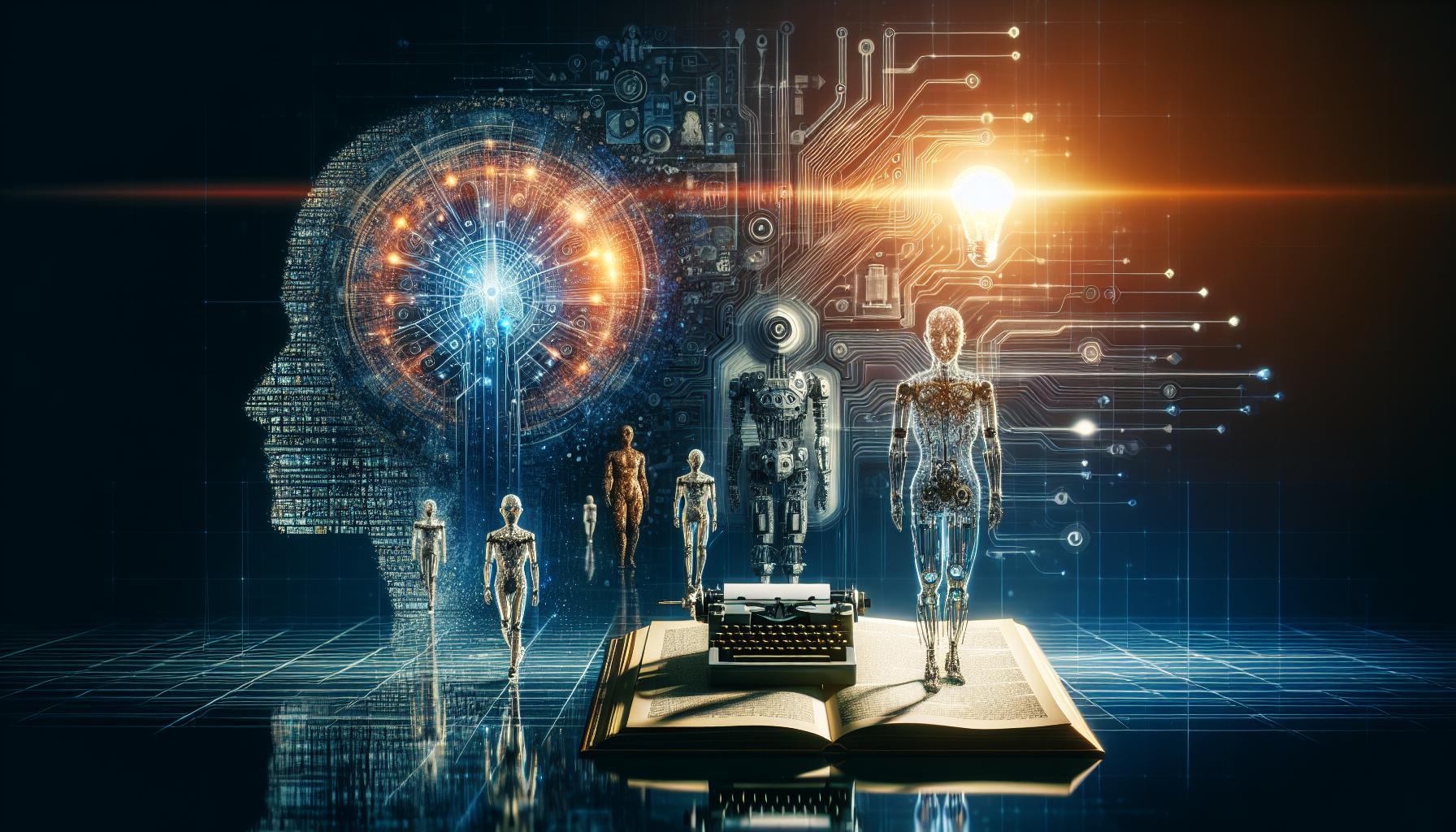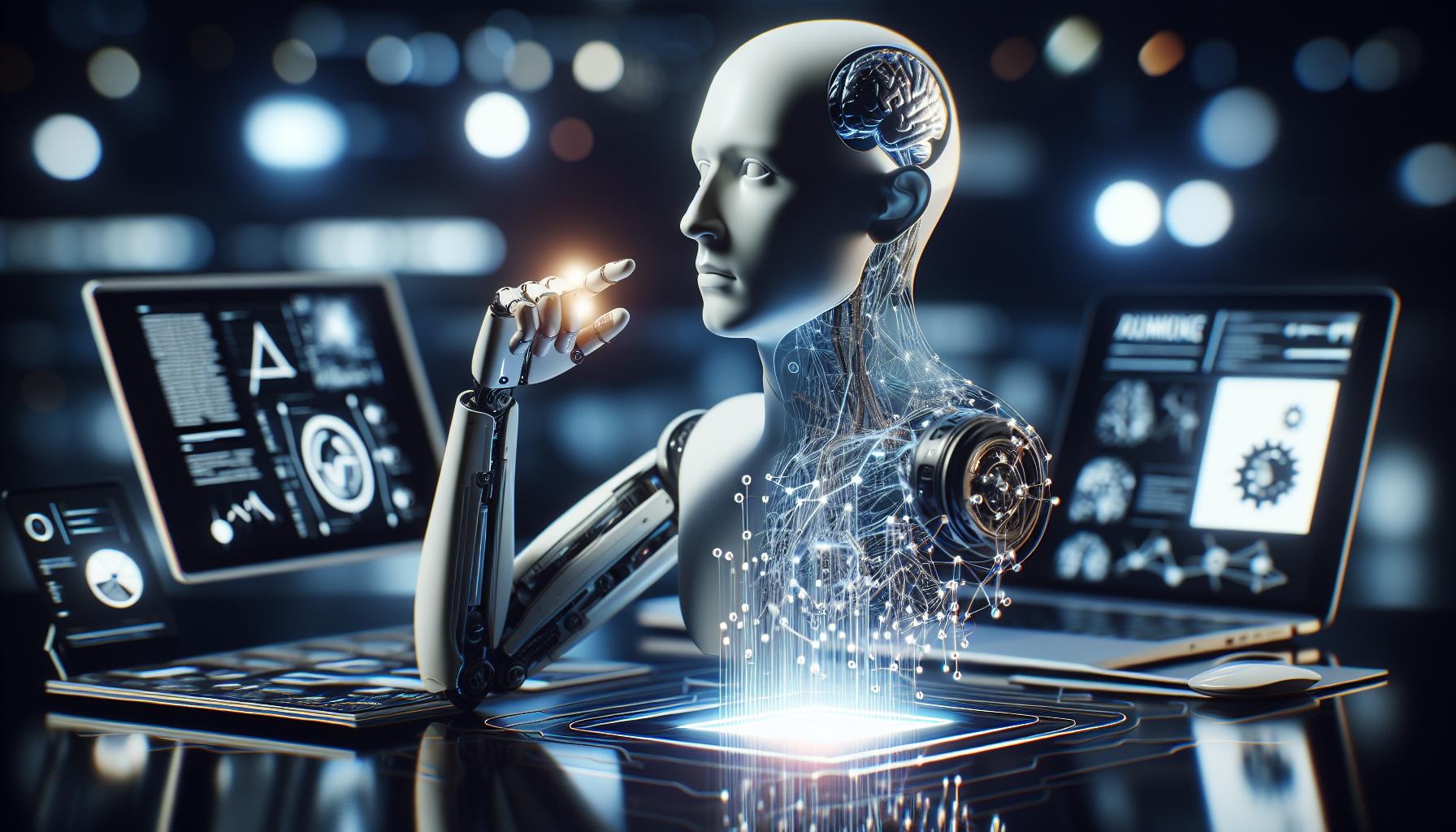As artificial intelligence continues to transform industries, one pressing question emerges: can it truly take the place of software testers in agile growth teams? The significance of this inquiry lies in the quest for efficiency and quality in software delivery. Understanding AI’s role in testing not only shapes future workflows but also reassures teams about maintaining high standards.
Understanding the Role of Software Testers in Agile Development
The Essential Contribution of Software Testers
In the fast-paced habitat of Agile development, the role of software testers transcends mere error detection.Testers are the guardians of software quality, advocating for end-users while seamlessly integrating testing processes with development cycles. They bring a unique viewpoint that not only enhances the functionality of a product but also ensures adherence to user expectations and market demands. While advances in AI have sparked discussions about the potential for automation to supplant human testers, the intricate nature of software testing reveals a different narrative: one that emphasizes collaboration and strategic thinking alongside technological developments.
Key Responsibilities of Testers in Agile
Software testers in Agile teams are pivotal in fostering a culture of collaboration and continuous betterment. Their roles encompass a wide range of responsibilities, including but not limited to:
- Test Planning: Collaborating with stakeholders to define testing objectives and scope early in the development process.
- Test Case Development: Crafting detailed test cases that align with user stories to ensure extensive coverage of features.
- Continuous Integration and Testing: Participating in regular integration cycles, providing timely feedback on builds to identify issues as they arise.
- User Acceptance Testing (UAT): Engaging end-users to validate that the software meets their needs and expectations.
this multifaceted role is crucial as teams work in iterations, frequently enough deploying features at a rapid pace. The close collaboration between testers, developers, and othre stakeholders ensures that any potential issues are identified and resolved swiftly, maintaining momentum in the development lifecycle.
The Human Element in Testing
While AI has demonstrable capabilities in automating repetitive testing tasks, it lacks the nuanced understanding that human testers bring to the table. For instance, testers can interpret user feedback, empathize with user experiences, and apply critical thinking to assess complex scenarios that machines cannot easily replicate. This human intuition plays a vital role in exploratory testing, where adaptability and creativity are key. Here’s a comparison illustrating the strengths of human testers versus AI:
| Aspect | Human Testers | AI Testing Tools |
|---|---|---|
| Empathy | Deep understanding of user experiences | Limited emotional comprehension |
| Exploratory Testing | Creative and adaptive problem-solving | Pre-defined test scripts |
| Communication | Effective collaboration with teams | Automation with limited context |
| Contextual Understanding | Ability to assess varying project requirements | Challenges with nuanced interpretations |
As organizations embrace Agile methodologies,recognizing and leveraging the irreplaceable qualities of software testers becomes critical. while discussions around whether AI can replace software testers in Agile development teams are relevant, it is indeed essential to understand that technology should serve to enhance the testing process, not replace the invaluable human insights that drive quality and innovation.
The Evolution of AI in Software Testing: A Historical Perspective
The Historical Journey of AI in Software Testing
In the world of software development, the integration of artificial intelligence has been anything but a sudden revolution—it’s been a gradual evolution shaped by technological advances and the ever-increasing demand for efficient testing methodologies. Initially, software testing relied heavily on manual processes, which, while thorough, were time-consuming and often prone to human error. As the software industry matured alongside the rise of Agile methodologies, the need for rapid feedback cycles drew attention to automation in testing. This marked the beginning of a significant shift towards incorporating AI into testing environments.
Key Milestones in AI-Driven Software Testing Evolution:
- 1960s-70s: The introduction of early test automation tools aimed at simple procedures, primarily focused on functional testing.
- 1980s: The dawn of regression testing tools enabled repeatable tests, yet lacked clever decision-making capabilities.
- 1990s: The growth of scripting languages and dedicated software for automated testing allowed for more complex test frameworks.
- 2010s: With the emergence of machine learning, AI began to demonstrate the ability to analyze test outcomes, leading to smarter test generation.
- 2020s: The current trend sees AI not merely augmenting testers but also evolving towards autonomous testing processes that mimic human judgment.
As we continue to ask, Can AI Replace Software Testers in Agile Development Teams?, it’s pivotal to recognize that AI doesn’t exist to entirely replace human skills but serves to enhance them. Today’s AI tools analyze vast datasets, recognize patterns, and predict potential problem areas in software applications—considerably reducing the testing time while enhancing accuracy.Through machine learning algorithms, these tools can continuously improve based on previous testing cycles, evolving their logic and responsiveness in real-time situations.
The Impact of AI on Agile testing Methodologies
In Agile development environments, where speed and flexibility are crucial, AI plays an instrumental role in the evolution of testing strategies. AI-driven solutions offer seamless integration with Continuous Integration/Continuous Deployment (CI/CD) pipelines, ensuring that the rapid pace of development does not compromise software quality. As a notable example, tools powered by AI can autonomously generate exhaustive test cases, execute them, and analyze outcomes to provide developers with actionable insights almost instantaneously. This shift not only reduces the workload of human testers but also allows Agile teams to focus on complex, value-added tasks, thus enhancing overall productivity and innovation.
| Year | Key Development |
|---|---|
| 1960s-70s | Early test automation tools |
| 1980s | Progress in regression testing |
| 1990s | growth of scripting languages in testing |
| 2010s | Machine learning in test outcome analyses |
| 2020s | Shift towards autonomous testing processes |
What AI Can Do: Exploring the Capabilities of Test Automation
Leveraging AI in Test Automation
The integration of artificial intelligence (AI) into test automation is transforming the software development landscape, particularly within Agile teams. By minimizing repetitive tasks and enhancing decision-making processes, AI offers a compelling option to traditional testing methods. Not only does this acceleration improve efficiency, but it also allows human testers to pivot towards more complex problem-solving and creative tasks, ensuring the quality and functionality of software products.
Key Capabilities of AI in Test Automation
AI’s potential extends across various aspects of test automation, each adding significant value to the Agile environments in which software testers operate. Here are several key capabilities:
- Intelligent Test Case Generation: AI can analyze code and user behavior to automatically generate optimized test cases. This leads to increased coverage and reduced manual effort.
- Predictive Analytics for testing: By utilizing historical data, AI algorithms can predict potential areas of failure in the software, allowing teams to prioritize testing efforts effectively.
- Automated Regression Testing: AI can facilitate the automatic regression testing process by distinguishing between areas that require testing and those that need less focus, based on previous results and code changes.
- Visual Recognition Capabilities: With advancements in image recognition technology, AI can conduct UI testing by identifying visual elements, ensuring that a user interface is both functional and visually appealing.
Real-World Examples of AI in Action
Many organizations have adopted AI solutions to enhance their test automation processes, yielding extraordinary results. For instance, large corporations like Facebook and Google utilize AI-driven frameworks to streamline their testing practices, enabling them to deploy software updates at remarkable speeds without compromising quality.
| Company | AI Implementation | Outcome |
|---|---|---|
| Utilizes AI to automate the generation of test cases for its applications | Increased deployment frequency and reduced testing cycles | |
| Adopts AI for predictive analytics in identifying potential code defects | Enhanced software reliability and shortened time-to-market |
harnessing these capabilities not only streamlines testing workflows but also fosters a culture of continuous improvement among Agile teams. While the discourse around whether AI can replace software testers in Agile development teams is ongoing,it is indeed clear that AI is adept at complementing human expertise,ushering in an era of smarter and more efficient testing methodologies.
Human Judgment vs. Machine Learning: Where Do We Draw the Line?
In a landscape where rapid iterations and constant feedback loops are paramount, the interplay between human judgment and machine learning is evolving at breakneck speed. With AI’s capabilities advancing, questions arise about its role in software testing within Agile development teams. Can AI effectively replace software testers, or do we risk losing invaluable human insights and creativity in the process?
The Inherent Value of Human Judgment
Despite the sophistication of machine learning algorithms, they lack the instinctual grasp of complex human emotions and situational nuances that skilled software testers bring to the table. Here are a few key areas where human judgment excels:
- Contextual Understanding: Humans can assess the business implications of a software flaw, frequently enough connecting technical issues to real-world consequences.
- Creative Problem Solving: Testers can think outside the box to devise innovative test cases that machines may not consider.
- User-Centric Perspective: A software tester with experience can anticipate end-user behaviors and challenges that AI might overlook.
Strengths of Machine Learning in Testing
Conversely, machine learning offers remarkable efficiency and speed, particularly in repetitive tasks. Here’s how AI contributes to software testing:
- Automation of Repetitive Tasks: AI can quickly run test cases against vast amounts of data, significantly reducing the time required for regression testing.
- Data Analysis: Machine learning algorithms can analyze large datasets to identify patterns and predict potential areas of risk.
- Continuous Learning: Advanced AI systems can learn from past test outcomes, improving their performance over time.
Finding the balance
When contemplating the question “Can AI replace software testers in Agile development teams?”,it’s vital to strike a balance between human oversight and technological efficiency. A symbiotic relationship between human testers and AI is often the most effective approach. Such as:
| Area | Human Tester | Machine Learning |
|---|---|---|
| test Case Design | Creative and contextual considerations | Data-driven approach with predefined parameters |
| Execution Speed | Slower due to manual input | Rapid execution of numerous tests |
| Bug Discovery | Focused on user experience and edge cases | Systematic discovery of easily identifiable bugs |
| Adaptability | Flexible in changing test strategies based on insights | Adaptive only if retrained with new data |
By embracing both human intuition and machine learning capabilities, Agile teams can enhance their software testing processes, harnessing the strengths of each to deliver higher quality software more efficiently.
The Benefits of AI-Driven Testing Tools for Agile Teams
in an era where rapid development cycles are the norm, AI-driven testing tools offer agile teams a transformative approach to maintaining quality and efficiency. The integration of artificial intelligence into testing processes not only accelerates the identification of defects but also empowers teams to focus on higher-level issues that require human insight. With AI’s capability to analyze vast datasets and learn from previous test cases,it serves as an invaluable ally in the quest for a more agile workflow.
One of the major advantages of using AI-powered software testing tools is their ability to enhance test coverage through automated testing. By learning from historical data,these tools can simulate various user interactions and environments,ensuring that applications are thoroughly vetted under diverse conditions. This level of coverage is especially crucial in agile environments where requirements can shift rapidly. AI tools can adapt tests in real time, adjusting to new scenarios without necessitating extensive manual intervention.
- Efficiency: Automation through AI significantly reduces the time required for regression testing, allowing teams to deliver updates faster.
- Predictive Analysis: AI tools can predict potential bugs or bottlenecks in the development process by analyzing patterns in past performance.
- Continuous Learning: AI algorithms continually improve by learning from new data, which helps in identifying issues more accurately over time.
- Resource Allocation: By automating routine testing tasks, teams can reallocate human resources to more complex, strategic activities that require creativity and problem-solving skills.
The implementation of AI-driven testing tools not only leads to higher quality deliverables but also encourages a culture of innovation within teams. With less time spent on repetitive testing tasks, team members are free to engage in exploratory testing, ultimately enhancing overall product quality. As agile practices evolve, leveraging AI is becoming essential for teams that aim to maintain a competitive edge.
| Benefits | Description |
|---|---|
| Speed | AI tools can run tests much faster than manual testing, allowing for quick feedback loops. |
| Scalability | AI can handle increased workload without a proportional investment in team resources. |
| Accuracy | Reduces human error in test case execution, increasing reliability of results. |
Incorporating AI-driven testing tools positions agile teams to not only keep pace with the evolving demands of software development but also to enhance their collaboration and strategic focus. While the question remains, ”Can AI replace software testers in agile development teams?” it is indeed evident that AI complements and enhances the capabilities of these professionals, enabling them to fulfill an increasingly critical role in delivering extraordinary software products.
Challenges and Limitations of Replacing Human testers with AI
the rise of artificial intelligence in software testing has stirred excitement, yet it also brings forward a spectrum of challenges and limitations that must be carefully considered. While AI can enhance efficiency, the complete substitution of human testers in Agile development teams raises numerous concerns that can perhaps undermine the quality of software products.
The Complexity of Understanding Human User Behavior
AI excels in processing vast amounts of data quickly, but it struggles with understanding the nuances of human behavior.In Agile environments, where user feedback is integral to rapid iterations, AI systems may fall short in capturing the sentiment, context, and variables that affect user experience.
- Emotional Intelligence: Testers frequently enough rely on empathy to appreciate user frustrations and expectations, something AI cannot replicate.
- contextual Understanding: Human testers can deduce the significance of edge cases and unexpected user inputs, which may not be pre-coded into AI algorithms.
Technological Limitations and Integration Issues
The integration of AI into existing testing frameworks often presents technical hurdles. While AI tools can automate repetitive tasks, developing a system that seamlessly fits into Agile workflows necessitates significant initial investment in training and setup.
| Challenge | Impact |
|---|---|
| Lack of Accurate Data | Inaccurate data can lead to misinterpretations and flawed test outcomes. |
| Maintenance Costs | Regular upkeep of AI systems requires time and financial resources. |
| Integration with Legacy systems | AI may need significant adaptation to work with outdated software systems. |
The Risk of Overreliance on AI
While AI brings numerous advantages, overreliance on automated testing can be detrimental. Agile methodologies thrive on collaboration and adaptability, both of which may diminish if teams lean too heavily on AI-driven outputs. A lack of human oversight could lead to critical bugs slipping through the cracks, especially in complex scenarios where AI’s predictive capabilities are insufficient.
Incorporating AI in software testing is not about fully replacing human testers but rather about augmenting their capabilities. Teams should aim for a balanced approach where AI handles routine tasks, while human insight drives the targeted areas that demand creativity, critical thinking, and emotional understanding. By embracing this collaborative model, Agile development teams can harness the full potential of AI while mitigating its limitations, ensuring high-quality software delivery.
Balancing Quality and Speed: How AI Can Enhance Agile Processes
the Imperative for Speed in Agile Development
In today’s fast-paced development environment, teams are increasingly challenged to deliver high-quality software at lightning speed.The Agile methodology, characterized by iterative processes and prompt feedback, is designed to foster this speed. However, the pressure to deliver quickly often raises concerns about maintaining the integrity and quality of the final product. This is where the integration of AI can play a pivotal role, serving as a catalyst for enhancing not just speed, but also the quality of software testing in Agile frameworks.
How AI Amplifies Agile Methodologies
AI technologies can streamline testing processes significantly, allowing Agile development teams to strike a balance between speed and quality.Here are some key ways AI enhances agile procedures:
- Automation of repetitive Tasks: By automating mundane testing tasks, AI frees testers to focus on more complex problem-solving activities.This shift not only accelerates the testing process but also mitigates human error, leading to more reliable outcomes.
- Predictive Analytics: Leveraging predictive analytics, AI can definitely help teams make informed decisions about risk assessment and resource allocation, optimizing the testing timeline without compromising quality.
- Continuous Learning: AI systems can learn from past testing data and continuously improve their algorithms, thereby enhancing the effectiveness of tests over time. This iterative improvement aligns perfectly with the Agile philosophy.
- Rapid Feedback Loops: With AI, teams can receive immediate feedback on build quality, helping developers identify issues early in the development cycle. This leads to quicker fixes and a more stable product overall.
Real-World Implementation of AI in Testing
To visualize the impact of AI in Agile processes, consider a fictitious Agile team at a software company that recently adopted an AI-driven testing solution. Before the implementation, the team faced delays in product release cycles due to time-consuming manual testing procedures.After integrating AI tools, they reported a 40% reduction in testing time, allowing for more frequent releases without sacrificing quality.
| Time Spent on Testing | Before AI Implementation | After AI Implementation |
|---|---|---|
| Overall Testing Time (hours) | 100 | 60 |
| Defects Found in Production | 15 | 5 |
| Release Frequency | Every 6 weeks | every 3 weeks |
This example illustrates that by adopting AI capabilities, companies can effectively answer the question of whether AI can replace software testers in Agile development teams. While AI does not fully replace the human element, it significantly enhances the effectiveness of Agile processes, allowing teams to maintain a robust quality assurance focus while meeting rapid delivery demands. In embracing AI, Agile teams can ensure they meet the expectations of today’s digital landscape—speed and quality in harmonious balance.
The Future Landscape: Human-AI Collaboration in Software Testing
The Shifting Dynamics of Software Testing with AI
The rapid acceleration of technology has brought forth a pivotal conversion in software testing. As Agile development teams continue to evolve, the interplay between humans and artificial intelligence is becoming more collaborative than competitive. Rather than asking,”Can AI replace software testers in Agile development teams?” the focus is shifting towards how these two entities can synergize for greater efficiency and quality.Enhanced Team Efficiency and Speed
AI tools are increasingly being adopted to handle the more repetitive, monotonous tasks that consume significant portions of software testers’ time. this shift allows testers to dedicate their expertise to higher-level functions, such as exploratory testing and user experience assessments. For instance:
- Automated Test Script Generation: AI algorithms can generate and optimize test scripts based on historical data, significantly reducing setup time.
- Real-time Bug Detection: AI systems can monitor code changes and run tests in real-time, enabling immediate feedback which is crucial in Agile environments.
- Predictive Analytics: Leveraging past data, AI can predict areas of the code that are likely to fail, allowing teams to prioritize testing efforts effectively.
This shift not only improves productivity but also fosters a culture where manual testers are seen as vital contributors who bring creativity and context to the testing process, a role that AI currently cannot replicate.
Practical Collaboration strategies
Adaptation and collaboration will be essential as AI becomes a staple in agile development processes. Here are some actionable steps that teams can take to integrate AI effectively:
| Strategy | Description |
|---|---|
| Upskill Teams | Invest in training for testers to understand AI tools and how to leverage them for enhanced testing outcomes. |
| Establish Clear Protocols | Develop guidelines for when and how AI should be utilized to prevent encroachment on tasks that require human intuition. |
| Monitor AI Performance | Regularly review the outputs of AI tools to ensure they align with expected quality standards and address any deficiencies promptly. |
In fostering this innovative partnership between human intuition and AI efficiency, Agile teams can not only enhance their testing processes but also contribute to a more robust software development lifecycle. Engaging with AI should not be viewed as competition but rather as an opportunity to rethink and reshape the roles within software testing, ultimately leading to products that are both high-quality and user-centric.
Ethical Considerations: The Impact of AI on the testing profession
Understanding Ethical Implications in the Testing Profession
As artificial intelligence continues to evolve,its integration within agile development teams raises significant ethical concerns,particularly regarding the role of software testers. The question of whether AI can replace human testers is not just a technical challenge but also a profound ethical dilemma that calls for thoughtful consideration. The impact of AI on quality assurance processes touches upon various issues, including job displacement, bias in AI algorithms, and the clarity of decision-making processes.
- Job Displacement: The capability of AI to automate repetitive testing tasks can streamline processes and enhance productivity, but it also raises concerns about the potential loss of jobs for software testers. Organizations must navigate this balance carefully, ensuring that the shift towards automation does not disproportionately disadvantage human workers. Implementing upskilling programs can mitigate this impact, helping testers transition into more strategic roles within the team.
- Algorithmic Bias: AI models are only as good as the data upon which they are trained. If these datasets contain biases,the AI could perpetuate or even exacerbate existing prejudices in software development. It is essential for teams to assess AI algorithms regularly and include diverse data sets to foster more equitable outcomes.
- Transparency and Accountability: With AI systems making critical decisions about software quality, the opacity of these systems can be disconcerting. Stakeholders need clear frameworks that outline how AI decisions are made. Establishing a feedback mechanism where testers can question and understand AI outputs will enhance trust and reliability.
Practical Steps for Ethical Implementation
To ethically integrate AI into the testing profession, teams should consider the following actionable steps:
| Action Step | Description |
|---|---|
| Conduct an Impact Assessment | Evaluate how AI integration will affect current roles and workloads within the team. |
| Develop Inclusive Training Programs | Create opportunities for existing testers to learn AI and machine learning concepts, focusing on collaboration between human testers and AI tools. |
| Establish Ethical Guidelines | Formulate a comprehensive set of ethical standards that AI algorithms must meet to prevent bias and promote fair practices. |
| Foster Open Communication | Encourage discussions among team members about the implications of AI in their work, allowing for a shared understanding of its ethical dimensions. |
Navigating the ethical landscape of AI’s role in the testing profession requires proactive measures. By addressing these considerations, agile teams can leverage AI technology while maintaining the integrity and value of human contributions in software testing.
Preparing for Change: Skills Software Testers Need in an AI-Enhanced World
In an era where artificial intelligence is progressing at breakneck speed, software testers face a pivotal transition in their roles. The question of whether AI can replace software testers in Agile development teams looms large, but instead of fearing displacement, professionals should focus on harnessing AI’s potential to elevate their skill sets and enhance their contributions to the team.
Essential Skills for Software Testers in an AI-Driven Landscape
To thrive in an environment influenced by AI, software testers will need to cultivate a blend of technical and adaptive skills. These competencies will not only enhance their efficiency but also align their capabilities with the demands of AI integrations in testing processes. Key skills include:
- Understanding AI and Machine Learning: Familiarity with how AI works, its algorithms, and its application in testing scenarios is crucial. Testers should explore AI-driven tools that automate repetitive tasks and learn how to collaborate effectively with AI systems.
- Analytical Skills: Enhanced analytical thinking will enable testers to interpret complex data outputs generated by AI. Being able to analyze patterns and identify anomalies in large datasets is invaluable for ensuring software quality.
- Test Automation Knowledge: Proficiency in test automation tools, especially those enhanced with AI capabilities, is becoming increasingly vital. Testers should seek out training in automation frameworks that employ machine learning for smarter testing.
- Communication and Collaboration: Agile methodologies emphasize teamwork and collaboration. Strong communication skills are essential for articulating testing issues and integrating feedback from AI systems into the development process.
Preparing for a Collaborative Future
As AI continues to evolve, software testers should not only focus on technical skills but also on creating a collaborative synergy with AI tools. This requires developing new approaches to testing that utilize AI to enhance human judgment rather than replace it.As an example, testers should familiarize themselves with model-based testing, where they can leverage AI to generate test cases based on models of the software.
A practical approach can involve workflow integration that respects the strengths of both AI and human testers. By understanding the logic behind AI decision-making, testers can refine their own methodologies.This adaptability is crucial as organizations increasingly seek to merge human insight with machine efficiency.
| Skill | Description | Action Steps |
|---|---|---|
| AI and ML Understanding | Knowledge of AI concepts and applications in testing. | Enroll in courses on AI fundamentals and applications. |
| analytical Skills | Ability to analyze data and identify patterns. | Practice data analysis using analytics tools. |
| Test Automation | Proficiency in automation frameworks with AI. | Take workshops on popular automation tools. |
| communication | Effective articulation of testing challenges. | Engage in active team collaboration activities. |
By embracing these skills, software testers can position themselves as indispensable assets in Agile development teams, proving that AI is not a replacement but a powerful ally in the quest for improved software quality. As discussions around “Can AI Replace Software Testers in Agile Development Teams?” continue, the focus should shift towards personal growth and adaptability in leveraging AI advancements.
The Conclusion
the integration of AI into Agile development teams offers a transformative avenue for enhancing the efficiency and effectiveness of software testing.While AI can automate repetitive tasks,expedite data analysis,and improve regression testing through machine learning algorithms,it is indeed crucial to recognize that it does not eliminate the need for human software testers. Skilled professionals bring critical thinking, contextual awareness, and nuanced understanding of user experience that AI currently lacks.
As we navigate this evolving landscape, organizations must consider the ethical implications of AI deployment, ensuring that human oversight remains central to the testing process. The symbiosis of AI capabilities and human expertise can lead to a more robust, adaptive testing environment that not only boosts productivity but also fosters innovation.
We encourage you to delve deeper into the intersection of AI and software testing. Explore case studies showcasing prosperous AI implementations, consider best practices for integrating AI tools while maintaining team dynamics, and reflect on the future roles of human testers in this emerging paradigm. Your engagement in this conversation is vital as we collectively shape the future of technology and work.













